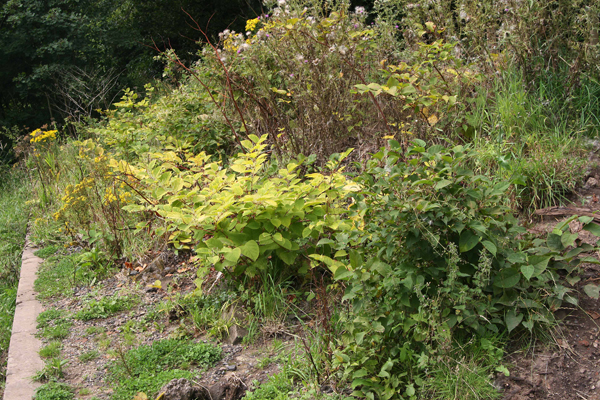It is approaching peak time for Japanese Knotweed control. When the plant is in flower it is in the process of storing energy in the rhizome root system for overwintering. If sprayed at this time, the chemical is translocated straight to the root and has a much greater impact on the plant than when it is sprayed earlier in the year when all its energy is aimed at developing shoots and leaves.
ART trained 14 volunteers over the last 2 years and now is the time for them to get busy if they can. Any time spent spraying now will reduce your knotweed problems for at least the next 2 – 3 years. Better still, if you follow this spraying up for the next 2 – 3 years you may even eliminate it completely. The stand in the photo would have filled the frame 2 years ago. This area was sprayed once only. Although reduced by over 95%, it still needs follow up spraying on annual basis until it is eradicated completely.
We have applied for SEARS licences for Contractors and some of our volunteers but any others wishing to get involved, please call the office now as we will need your certificate details to include them on the licenses. Without SEARS approval, you can’t spray.
Japanese Knotweed only reproduces from cuttings in the UK so despite the flowers that develop, no seed is produced. Strimming the plant produces masses of tiny fragments (cuttings) that can develop into new plants. This is the reason that it’s best not to interfere with the plant at all rather than hack it down as this only increases the scale of the problem. Anglers and riparian owners are largely responsible for the spread of this plant on our rivers due to misunderstanding the reproductive process.
Owners and clubs with problem stands are encouraged to get in touch with the Trust for advice or assistance.


